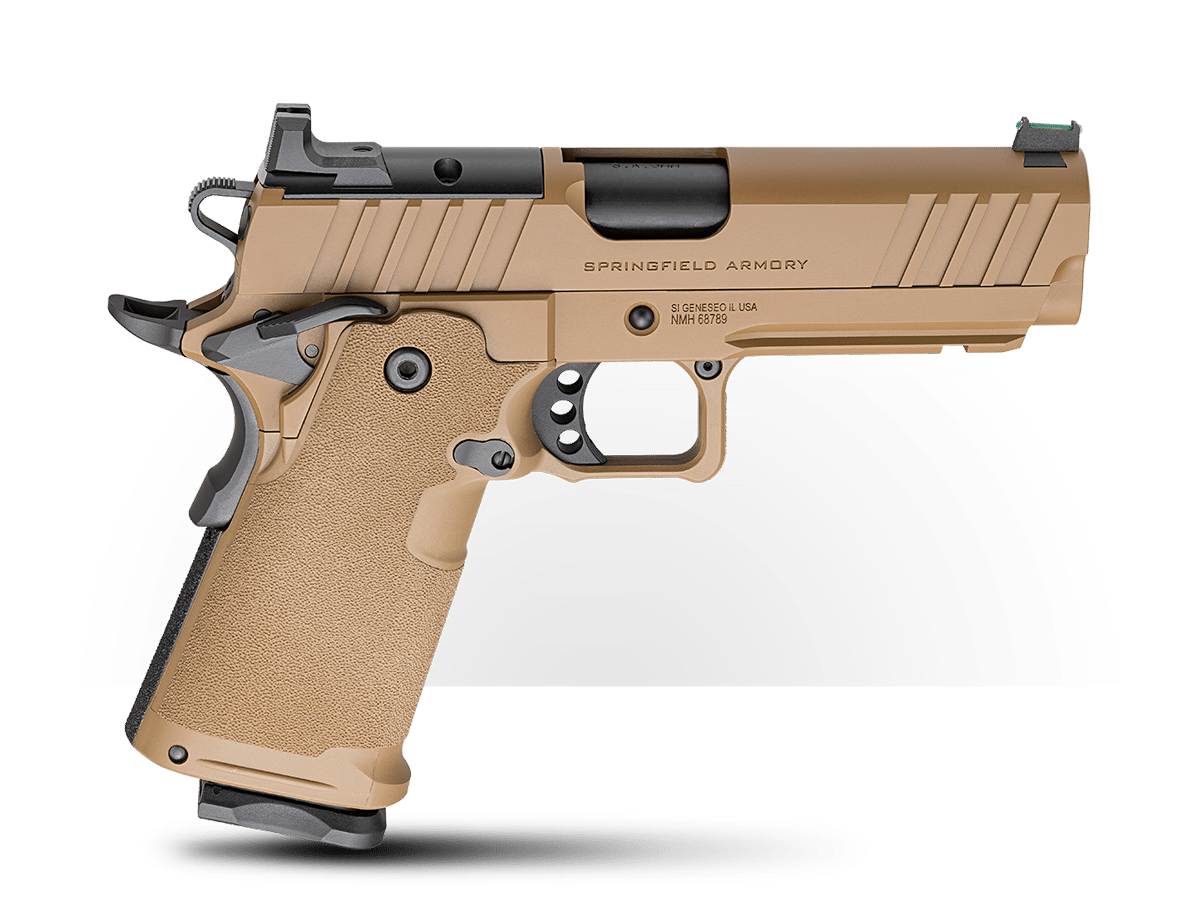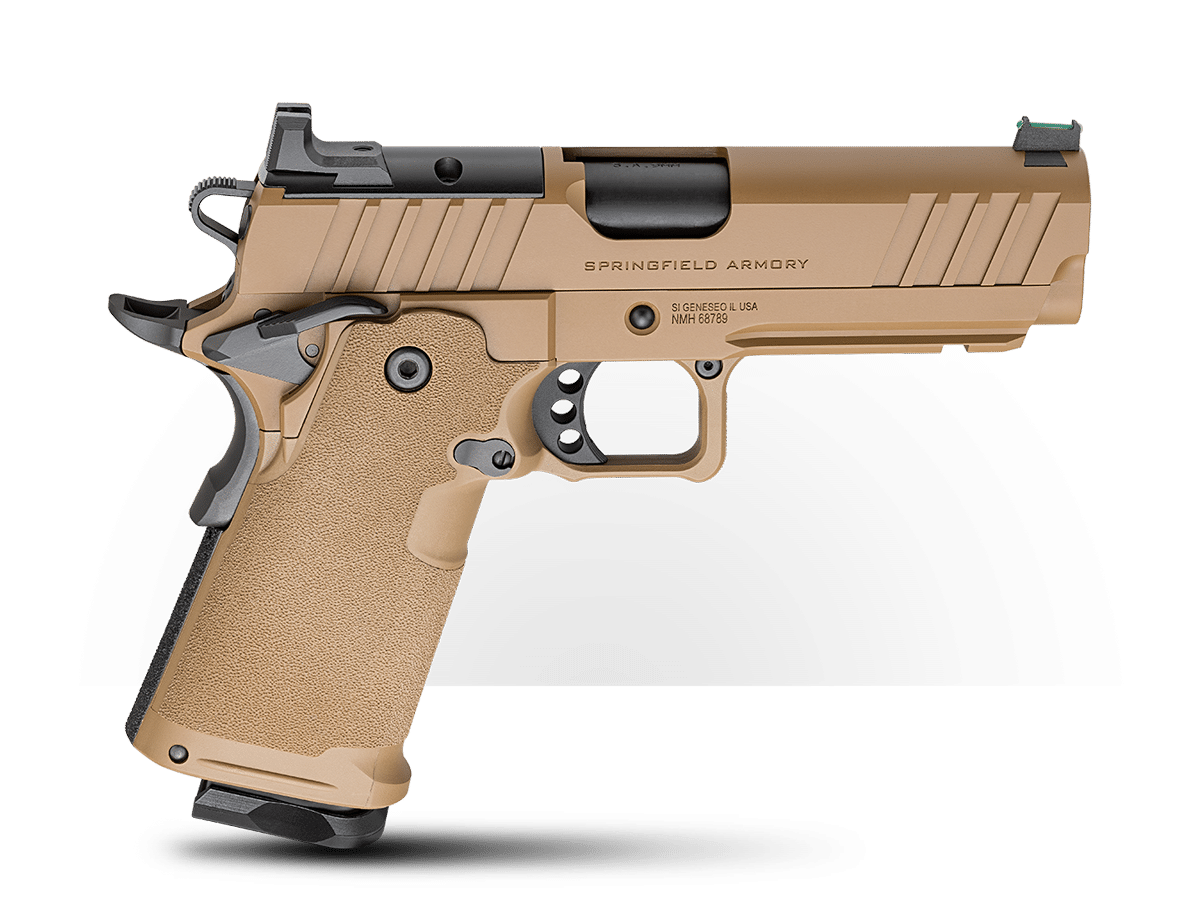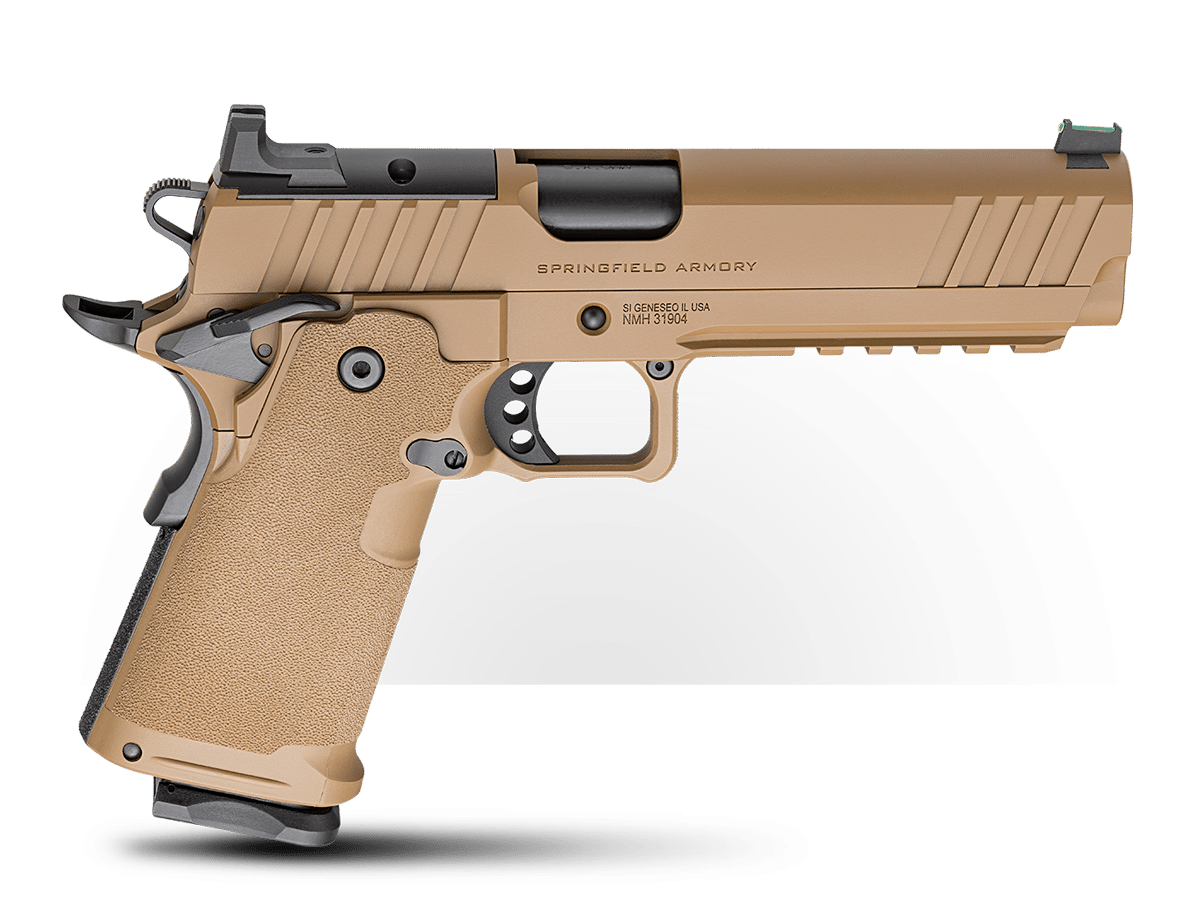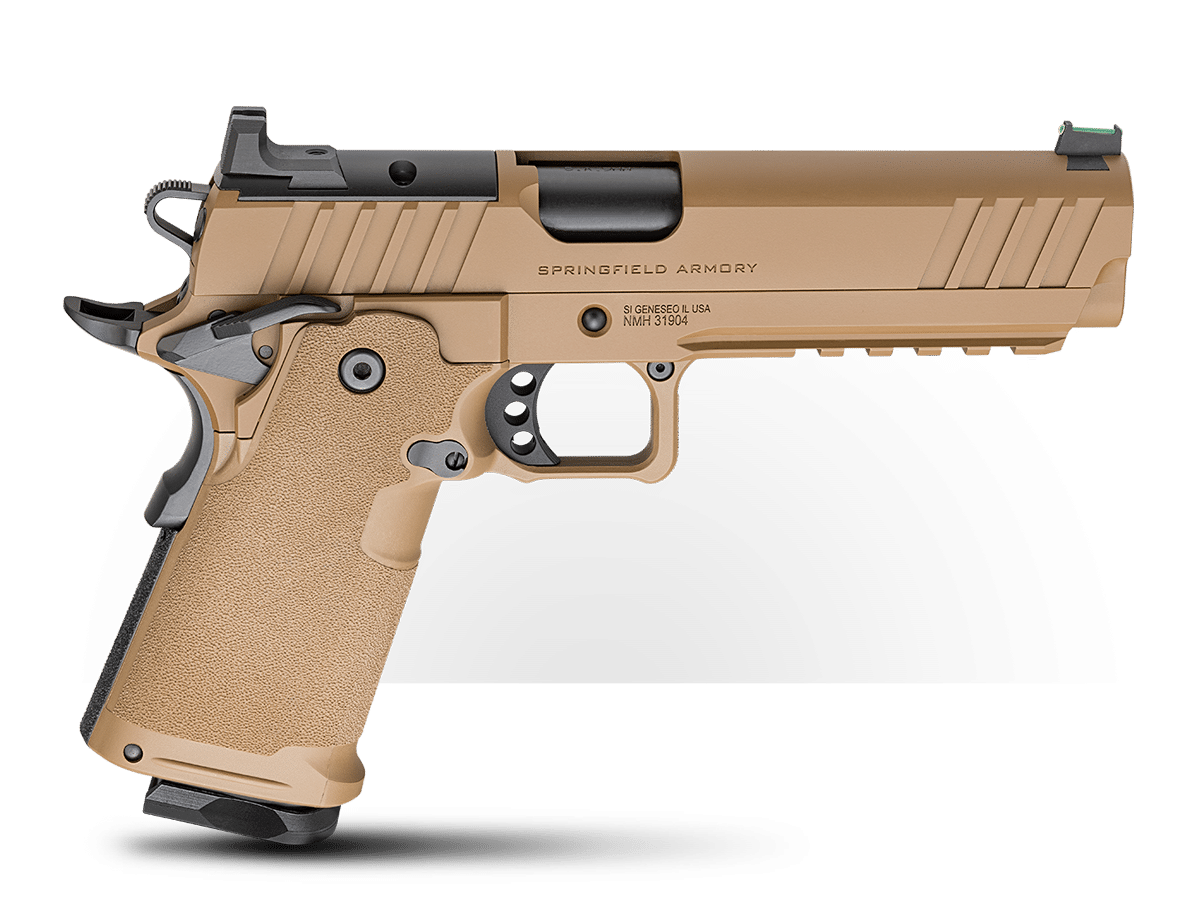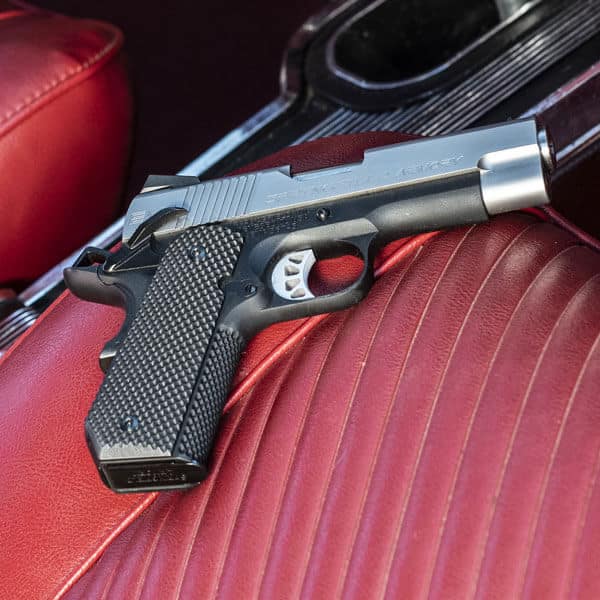Review: Coyote Brown 1911 DS Prodigy
July 24th, 2024
9 minute read
In today’s article, Joe Woolley takes a look at the new Coyote Brown 1911 DS Prodigy 9mm pistols. These guns were loaned to him by Springfield Armory for the purposes of this evaluation. Additionally, Vortex provided loaner optics used in this article.
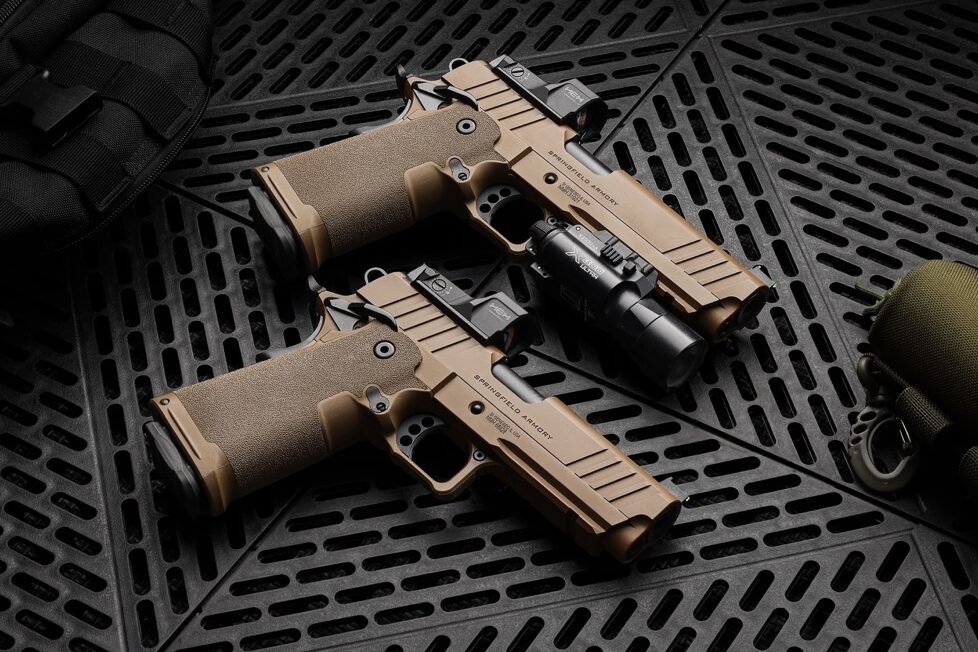
I am going to venture that, while many of the readers of The Armory Life may be truly “tactical” in training and experience, the vast majority of us could be better described as “practical” in our lives and our gear. [Don’t miss our article What Does Tactical Mean?] Whether the intended purpose is competition, hunting or self-defense, firearms are an important part of that gear.
That “practical” thing kicks in as we choose which firearm to use or carry. I teach my students that a good gun must meet four conditions: It must go bang every time, it must hit what I point it at, it must be chambered in a reasonably large cartridge, and it must fit my hand. Let’s go ahead and add a fifth requirement — it must last. This is a sufficiently large investment that I don’t need to rust solid overnight.
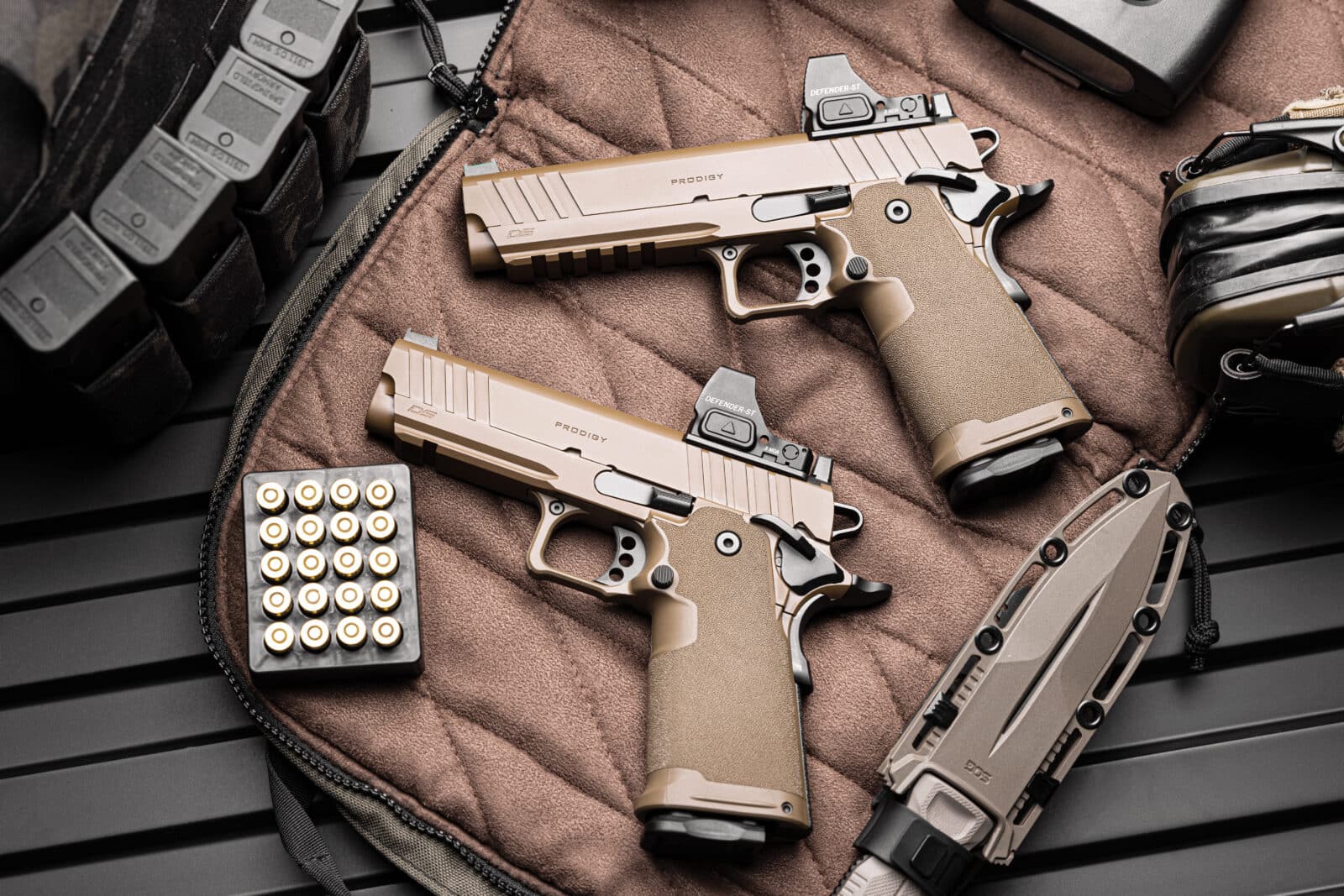
There are quite a few finish treatments that can help my firearms survive the Gulf Coast humidity in which I live. Black Oxide (bluing) and Parkerizing are a couple of finishes most of us are familiar with. Some, like “Tenifer”, “Melonite” and “Armornite”, use methods that bond a finish to the metal. NiB (nickel boron) and DLC (Diamond Like Coating) actually penetrate the surface of the metal to bring reduced friction and corrosion resistance.
[Make sure to read our article on gun finishes for more information on these coatings and treatments.]
The Right Choice?
Perhaps the most user-friendly coating goes by the name of Cerakote. It is a polymer-ceramic compound that can be applied to wood, polymers, plastics and metal. According to those who are in the know, it can also reduce wear and tear over time. It provides abrasion, corrosion and chemical resistance. It’s water-resistant and stands up well to impact-created scratches and dings, and it is available in a myriad of colors.
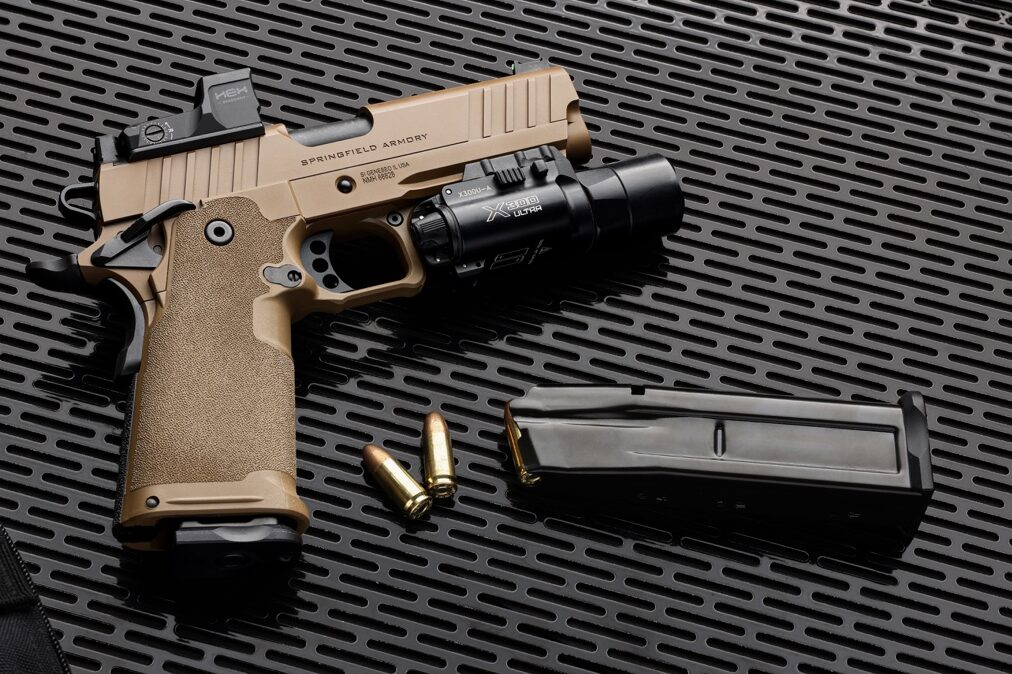
Springfield Armory has been using a variety of corrosion-resistant finishes for years, and Cerakote has certainly been a favorite of late. They announced earlier this year that the Springfield Echelon pistol would be available in Coyote Brown and OD Green, and today the Coyote Brown coloring is being made available on their Prodigy DS 1911 pistol as well! It is available in both the 5” and 4.25” models.
Kudos to Springfield, and very cool for us as we now have a new color option on a great multi-use pistol. The Prodigy that I use for home defense and concealed carry is their black Cerakote model. For those jobs, I like colors that hide in the shadows. For use out in the open, Coyote Brown may be a much more versatile choice. We use color all the time outdoors.
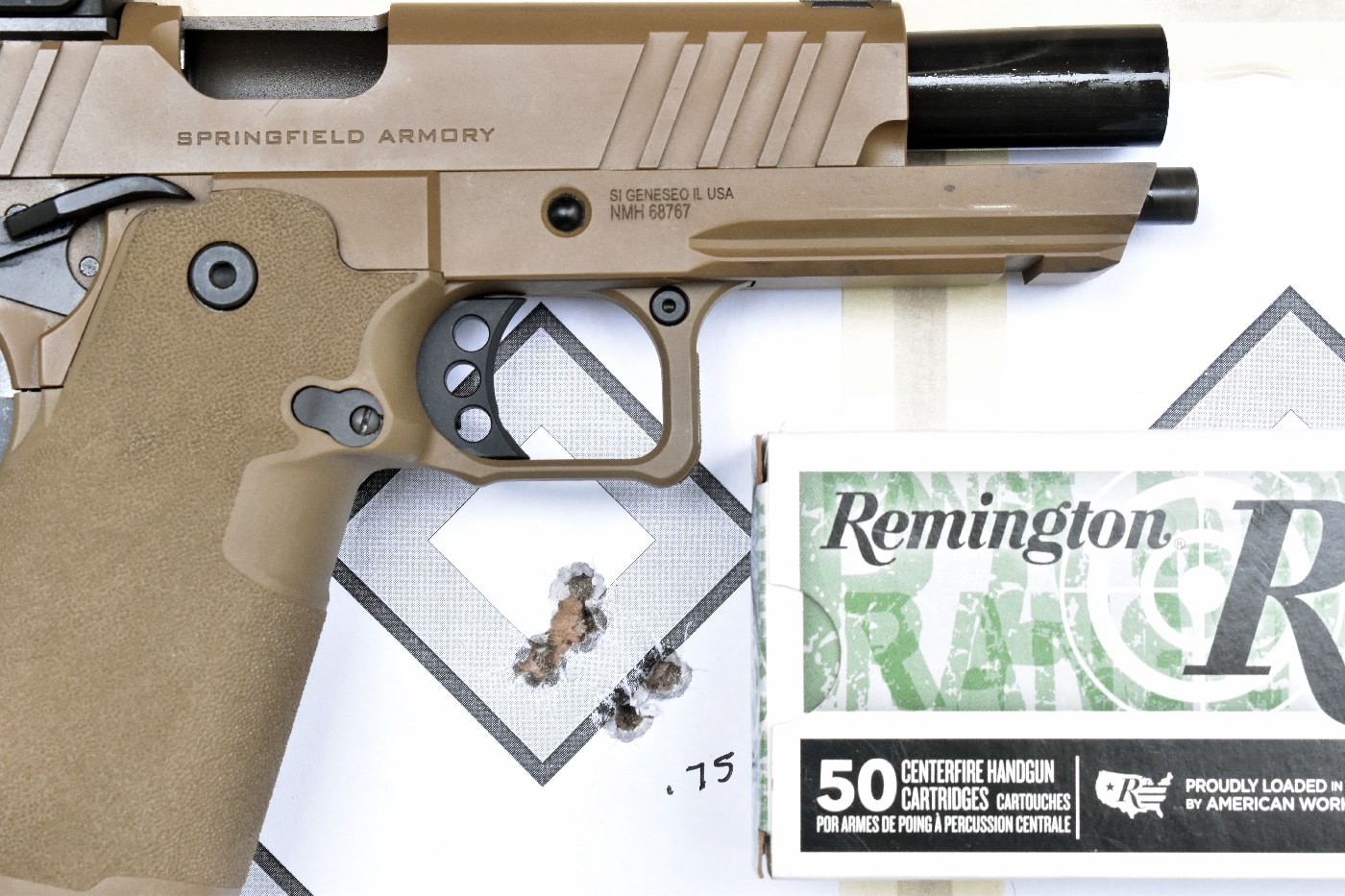
Since I live on the Gulf Coast of Texas (where a lack of water is not an issue), scenery tends to be pretty green. The last time I drove to the Shooting, Hunting, Outdoor Trade (S.H.O.T.) Show, the Texas countryside turned brown around Dallas and stayed that way all the way to Las Vegas. Face it, for a lot of this nation, especially the mountains and the West, a brown ceramic finish on your firearm is an eminently practical choice.
The Foundation
In basic black, the original Springfield Armory Prodigy 1911 DS was already a great choice as an EDC pistol. It is chambered in 9mm which offers several advantages over 40 (+) bores. Recoil impulse is lighter, meaning the muzzle will flip less and allow for faster follow-up shots. Then there is the opportunity, in a properly designed pistol, to carry 25% to 100% more ammo in essentially the same space as a single-stack 1911. I’d call that a win/win.
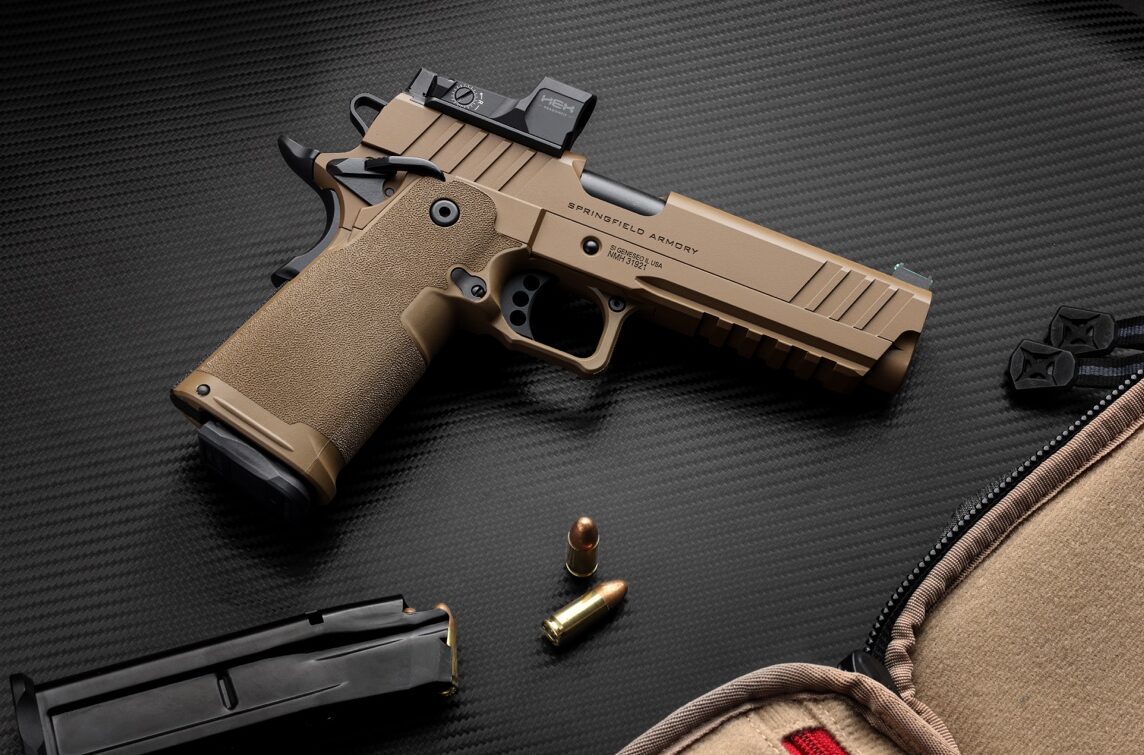
A 1911-style pistol is one of the places where the “properly designed” criteria comes into play. A single-stack 1911 in 9mm can carry one to two more rounds than a 45 ACP. The double-stack Prodigy from Springfield Armory can more than double that. Introduced in September of 2022, the Prodigy ships with a 17- as well as a 20-round magazine. Both lengths, as well as an available 26-rounder, are available from the Springfield Armory Store.
While the Prodigy may exhibit the classical 1911 lines many of us still admire, it brings a lot of ultra-modern technology to the game. The slide and frame are machined from forged steel for durability — or at least part of the frame is. The lower part of the frame is a molded grip module that is well-covered by Springfield’s adaptive grip texture. Think of it as a two-layer grip. You can feel the outer layer with a casual grip making sure the pistol doesn’t slide around in your hand. I tend to grip my pistols hard when I shoot them. As I do so, I can feel that second, more aggressive layer lock in on my hand, making sure I can control the Prodigy well in full recoil.
There is a smooth surface immediately under the triggerguard. The front strap of the frame is undercut to allow a higher grip (and better recoil control). The bottom of the triggerguard, where it meets the support hand index finger, also sports the grip texture as does the forward end of the squared guard for those that like to use the support index finger in front. The magazine release is extended enough to be easily activated without inadvertently dropping mags. The mag well has been nicely beveled.
[Don’t miss Paul Carlson’s Prodigy Torture Test and Review.]
The controls have been well-executed. The ambidextrous manual thumb safety is wide and long enough to operate easily without it being so big that it digs into the hand. Operation was very positive, even on the right side. The grip safety sports a memory bump that helped release the trigger smoothly and quickly as it was depressed. To us that means that the safety performs as required but still forgives a less than absolutely perfect grip. Both sides of the slide stop are countersunk into the side of the frame. Access was still easy, but we certainly weren’t worried about moving the slide stop accidentally.
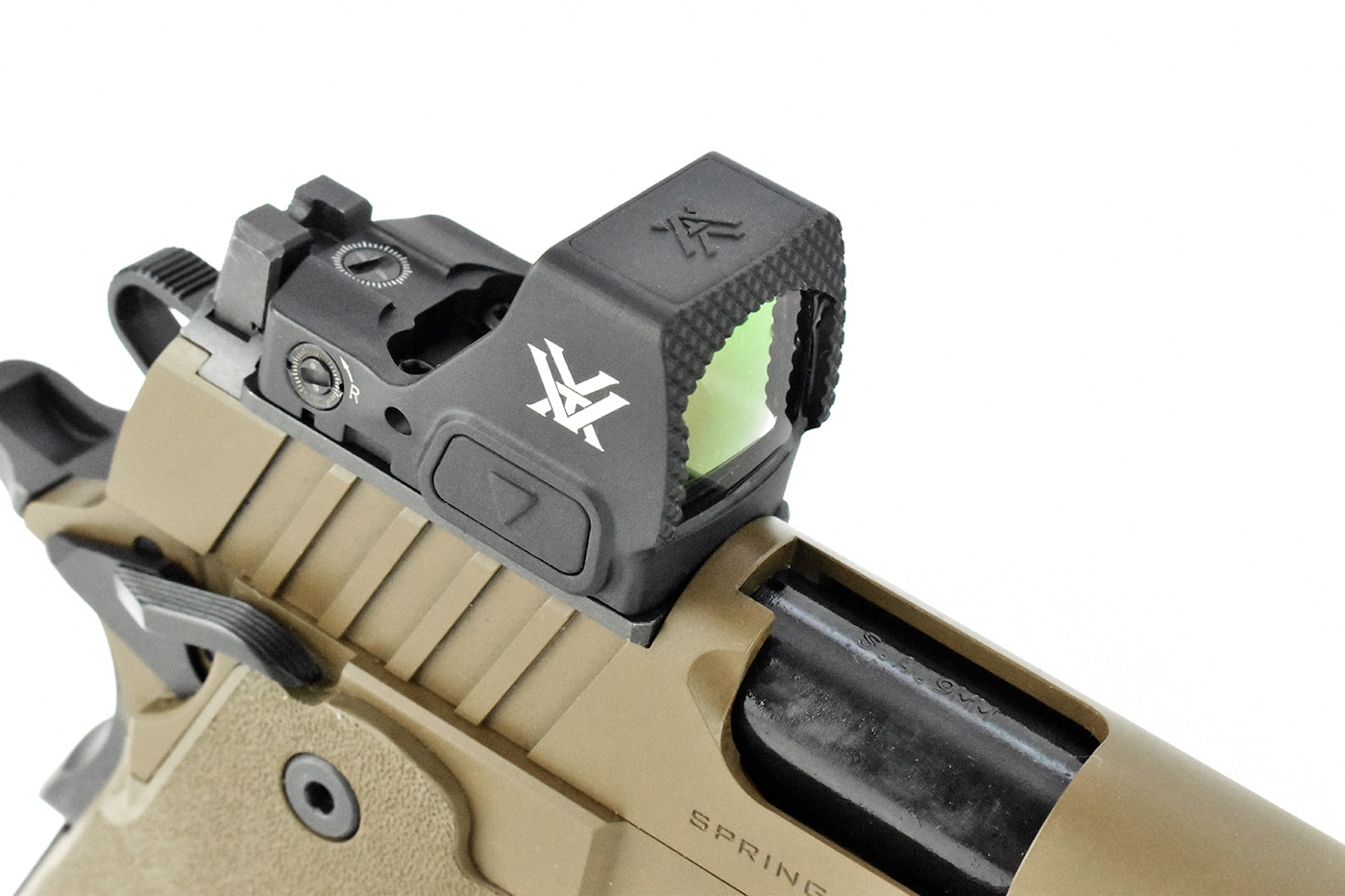
And let’s not forget the AOS (Agency Optic System) optics mounting system on the slide, that allows you to fit a wide range of popular red dot optics to the pistol.
Hands-On
My Prodigy sample is the 4.25” barrel version that is our favorite for carry and home defense. The shorter length may flip just a bit more than its 5” big brother, but I like the cycling speed and the quick transitions of the shorter model. That said, the Springfield mid-length version still manages to put a little weight out front. The slide and frame are an almost slab-sided unit. When added to the bull barrel, the combo does a great job of taming recoil. Big grasping grooves fore and aft make slide manipulation easy while keeping hands away from muzzles and ejection ports.
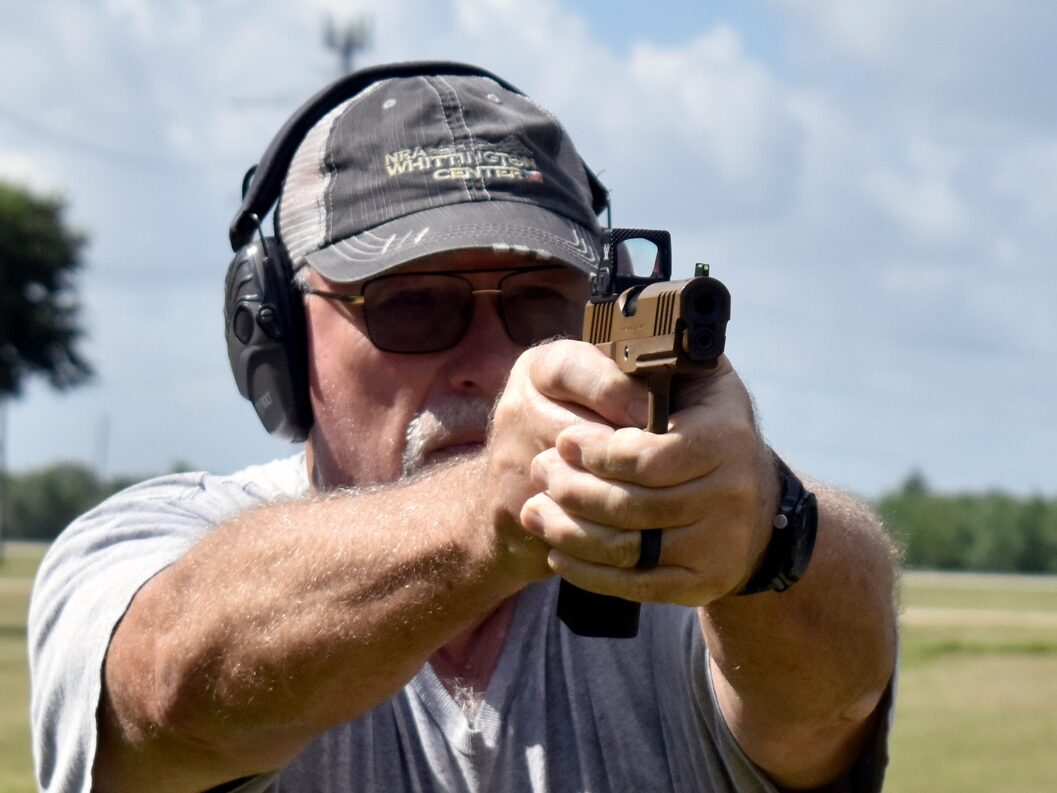
Sometimes new is better, and sometimes maybe not. If you haven’t test-fired the trigger on a good 1911, you really need to do yourself a favor. Initial takeup is only about 1/8 inch. Required trigger compression on our sample was about 3.7 lbs. Overtravel was almost nonexistent.
While factory iron sights have improved dramatically over early models, many now prefer reflex red (or green) sights mounted directly to the slide. The large variety of mounting patterns can create an issue, but Springfield Armory solved many of your potential problems with their AOS shipping as standard equipment on the Prodigy. The slide comes milled for adapter plates that will match most of the red dot optic footprints necessary today. Six different plates are available with an integral rear sight, one of which should work for you. So, enjoy your Prodigy as is with a great rear sight and a fiber optic front sight. Or order the plate of your choice and mount your optic on that plate which should still allow you to use the iron sights for back up if needed. The pistol also has a standard cover plate with rear iron sight.
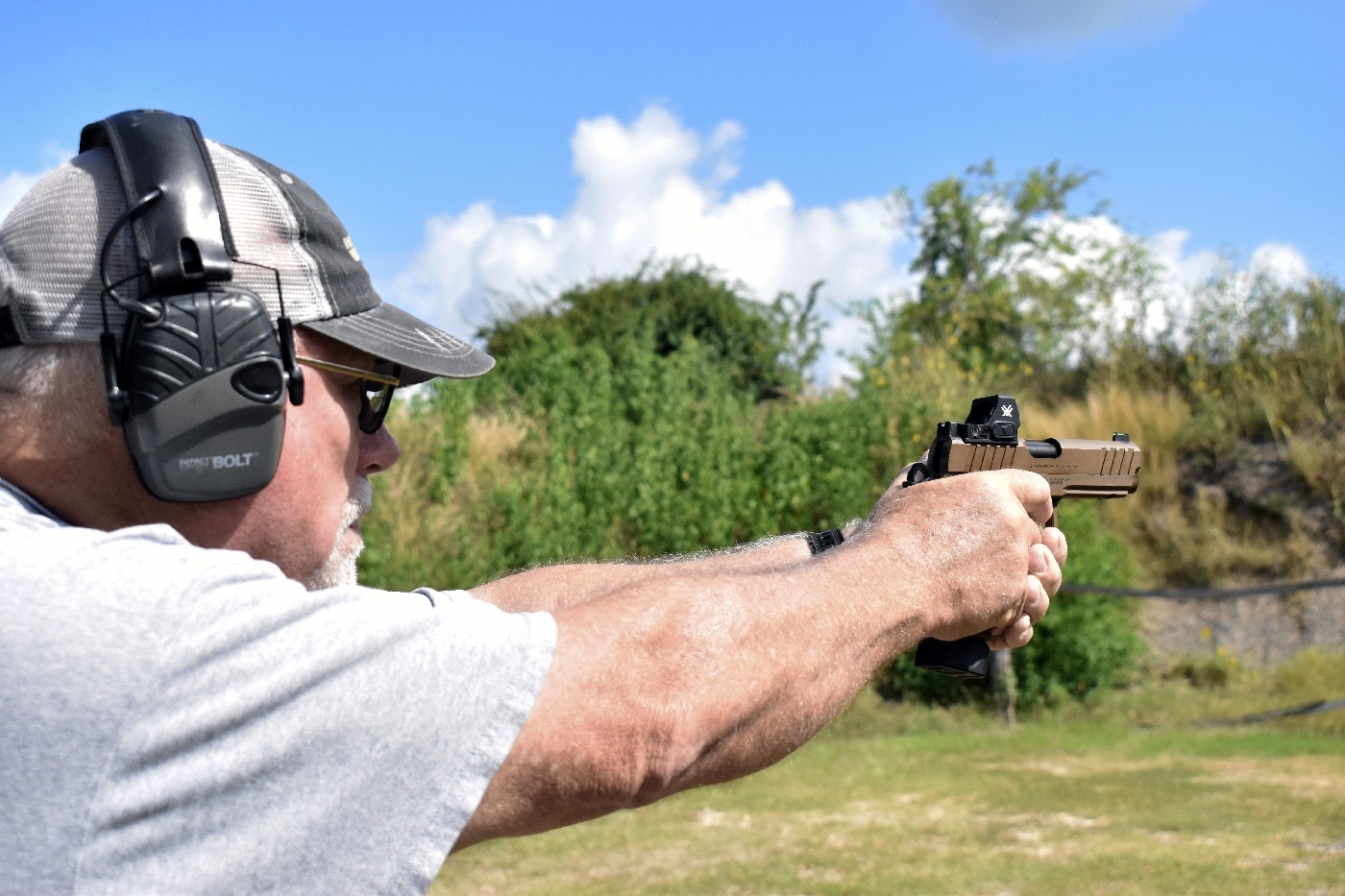
I tested this Prodigy with one of the latest red dots from Vortex. Known for their warranty — if you break it, they fix it or replace it for free — they are also well known for their product. Their Gen2 and, more recently, their Gen 3 Razor long-range scopes have done a great job for me for years.
For this test, I used their Defender-ST model reflex sight with the 3 MOA dot. It provides a large 23 x 20 mm lens in a very small package. The window brings more vertical room than what I normally see. It leaves a lot of open glass to help you find the dot. The AOS system also allows for the inclusion of a rear sight that can still view the front sight over the rear deck of the Vortex Defender.
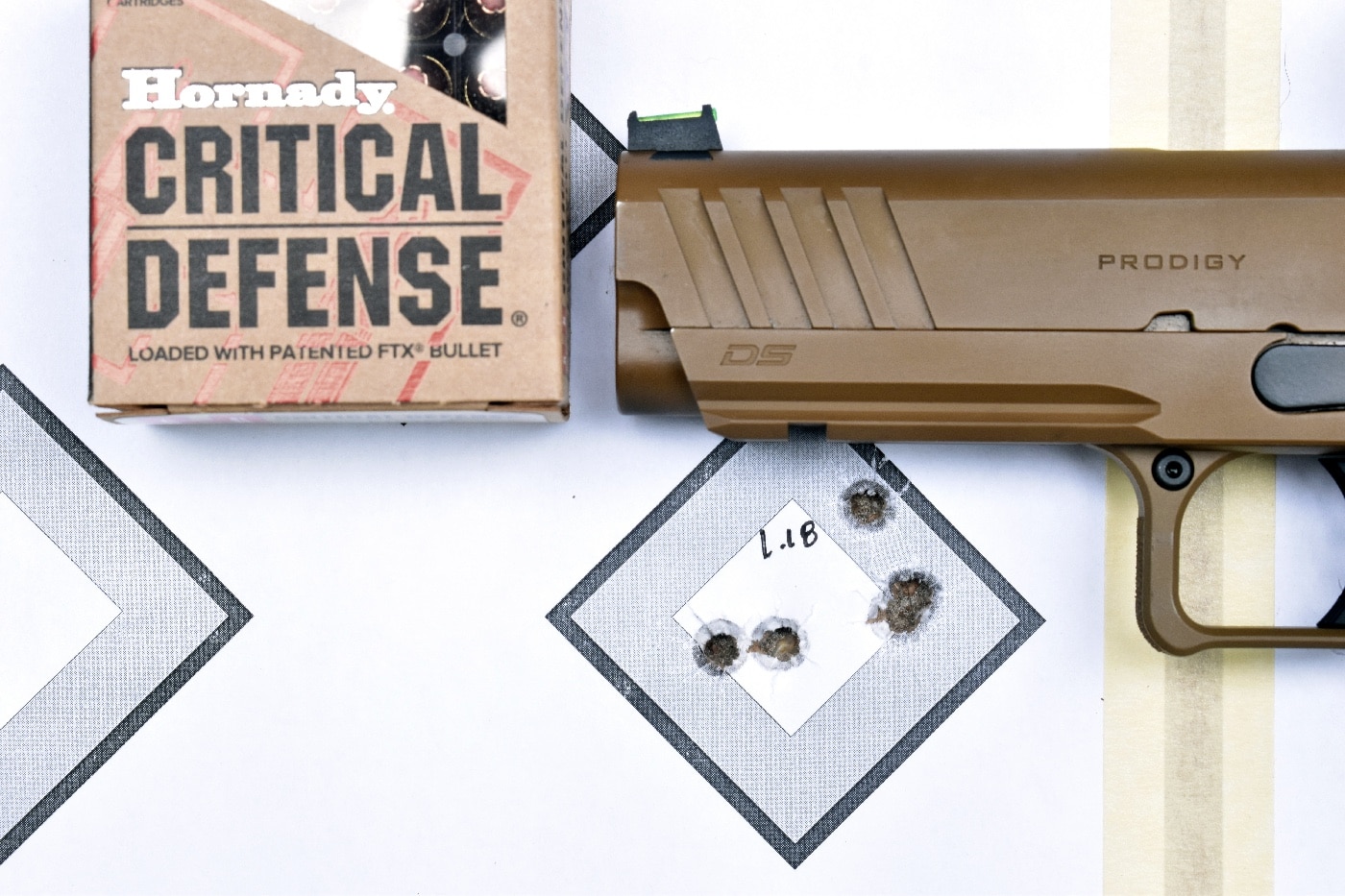
Size and construction parameters are impressive. The whole unit is 1.83” long and weighs less than 1.5 oz. The dot is motion activated and will turn off after 10 minutes with no movement. This Defender-ST allows 10 brightness setting — eight for daylight and the two lowest are night vision compatible. The 7075-aluminum body also contains a polymer shell to help protect it from all those recoil G’s.
[Be sure to follow our guide on How to Clean the Springfield Prodigy.]
The CR2032 battery loads from the top so zero is not affected by a battery change. The front face of the shell is cross-hatched with “Fast Rack Texturing” to allow the shooter to rack the slide using the red dot and still protect the glass. BTW, this Vortex dot is built on the Leupold Delta Point Pro footprint and requires the AOS 15-B plate.
Range Time
Over the course of a very hot July morning and several hundred rounds, this Prodigy ran like a champ. I oiled it lightly once and then let it run. It did extremely well with all three loads, with the overall average group coming in at just under 1.25”.
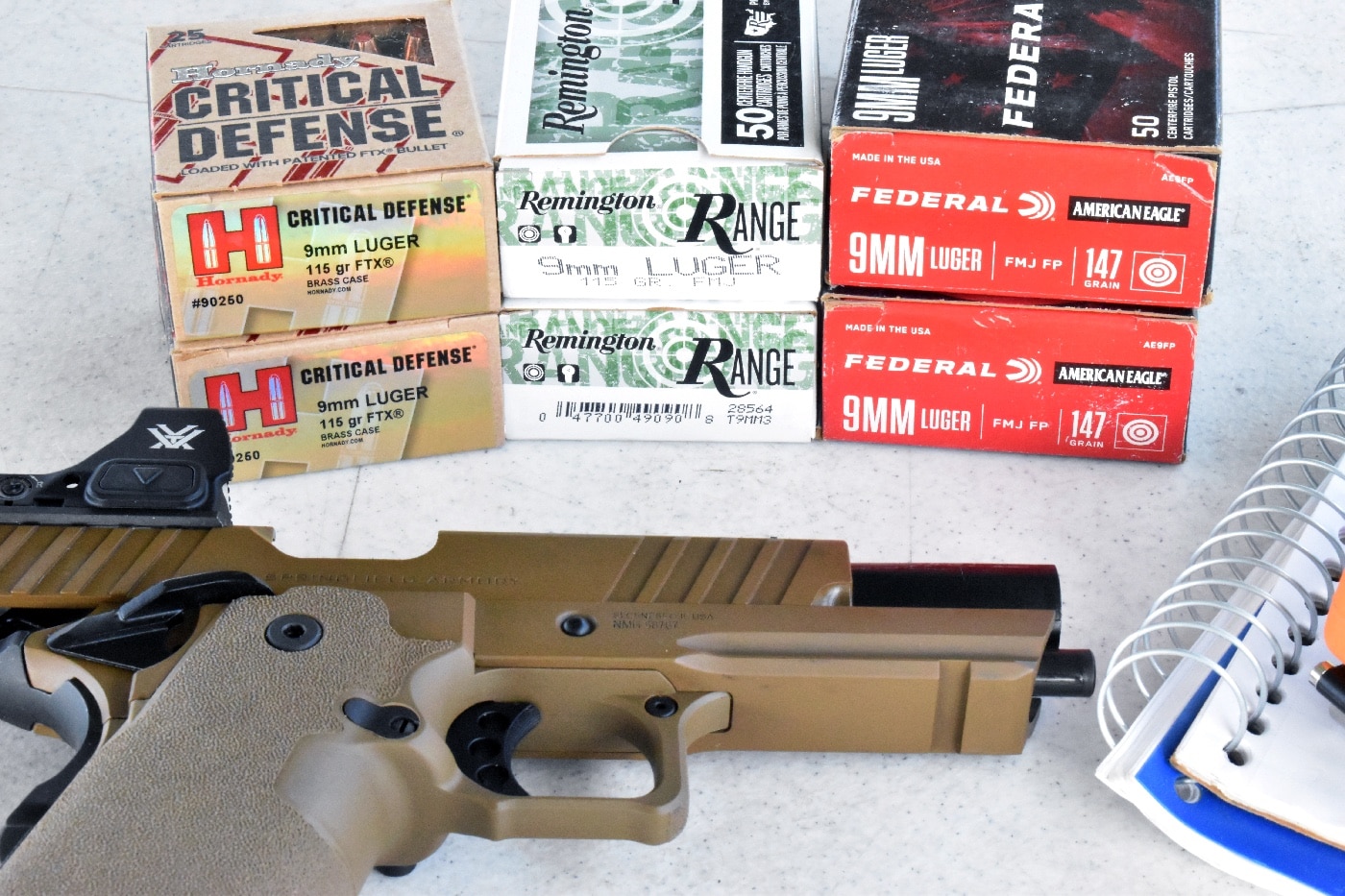
Performance — 15 yards
| Load | Velocity | Energy | Group (best) | Group (average) |
|---|---|---|---|---|
| Federal 147-gr. FMJ | 993 fps | 322 ft-lbs | 1.10″ | 1.37″ |
| Hornady 115-gr. Critical Defense | 1,125 fps | 323 ft-lbs | 1.12″ | 1.19″ |
| Remington 115-gr. FMJ | 1,116 fps | 318 ft-lbs | 0.75″ | 1.10″ |
The single shot drills were fired at a 3”x5” label, and most of the shots were on the paper with a 1.32 second average from the draw. Note that the splits on the multiple shot drills were pretty stable at about .2 seconds. That’s not a limitation of the pistol, that’s as fast as this former Master Class shooter can move his finger anymore.
Speed Drills
| Drill | 1st Shot Average | Split Average | Total Time Average |
|---|---|---|---|
| Single Shot | 1.320 seconds | n/a | n/a |
| Two Shots | 1.253 seconds | 0.197 seconds | 1.54 seconds |
| Three Shots | 1.327 seconds | 0.203 seconds | 1.73 seconds |
That said, the vast majority of the shots were solid A Zone hits with occasional C’s. Muzzle flip was minimal on this Commander length gun and the times reflect that.
Conclusion
The new Coyote Brown 1911 DS Prodigy is a great addition to the Prodigy line. Combining impressive performance with eye-catching good looks, the 4.25” and 5” pistols come in at an MSRP of $1,549. Be sure to check them out.
Editor’s Note: Be sure to check out The Armory Life Forum, where you can comment about our daily articles, as well as just talk guns and gear. Click the “Go To Forum Thread” link below to jump in!
Join the Discussion
Featured in this article
Continue Reading
Did you enjoy this article?

 155
155




